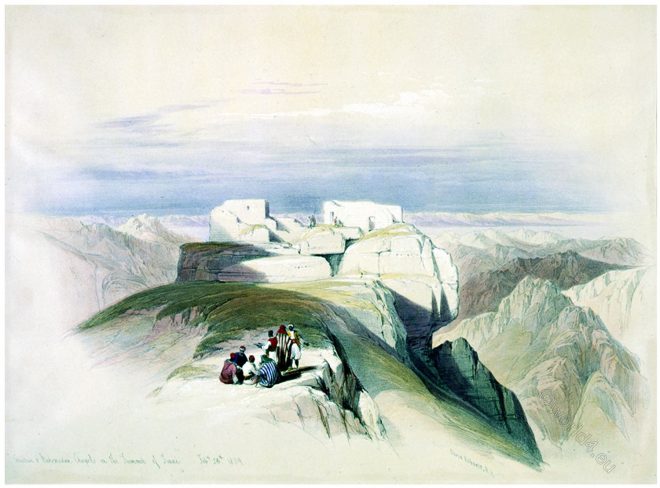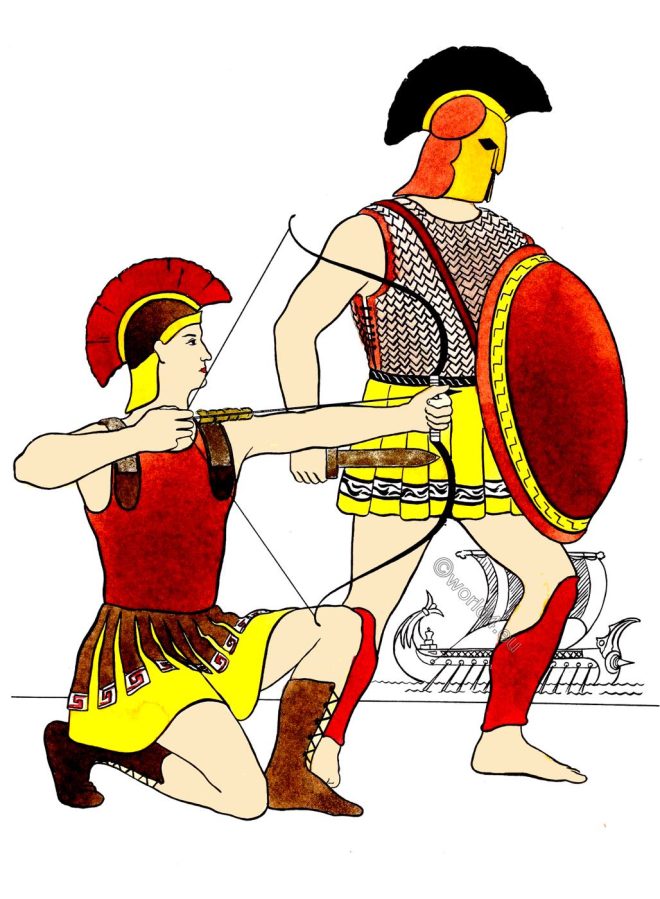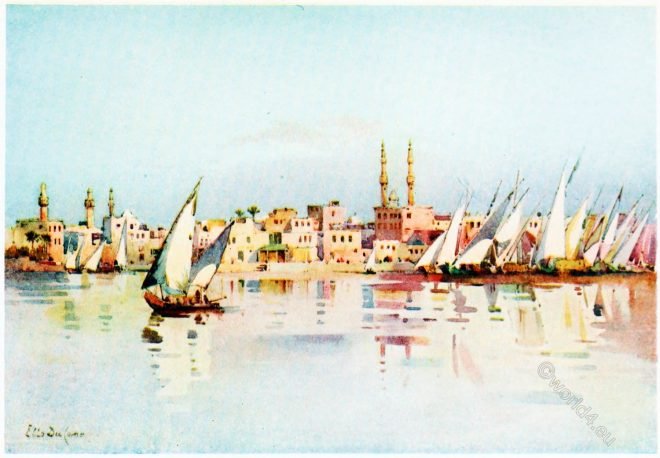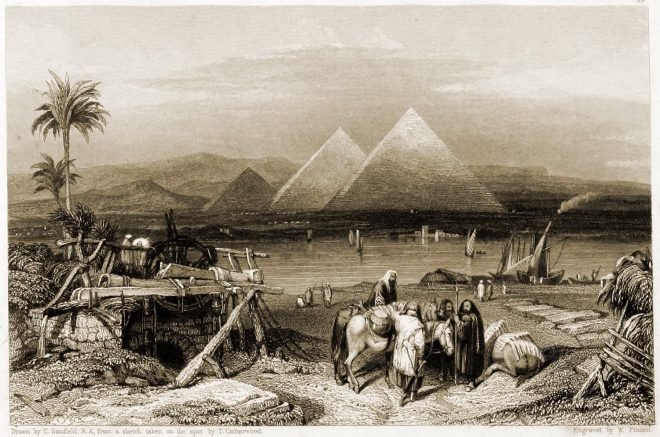The Artist has taken the Sketch about due South of the Convent, looking upon the track which he pursued from the presumed Plain of the Israelite Encampment.
Category: Genre
Ascent to the summit of Mount Sinai.
Journey to Mount Sinai. The path to the summit of Mount Sinai leads through a gorge in the southwest. One of the Monks of the Convent stationed himself there in prayer.
Ascent of the lower range of Mount Sinai, 1839.
This Sketch gives a portion of the Israelite march to Sinai. The foot of the Pass before us, called by the Arabs Nukb Hâwy (Windy Pass).
The Christian and Mohammedan Chapels on Mount Sinai, 1839.
Those Chapels are placed on what is traditionally regarded as the summit of Sinai.
Religious sacrificial ceremonies of Romans in ancient times.
Various depictions and descriptions of bloody and bloodless sacrificial ceremonies of the ancient Romans. The cultrarius, the camillus, the spondaules, the victim butchers, victimarii, the popa.
Greek Military. Two warriors in armor of iron, bronze, and leather.
The two warriors in the picture are wearing or carrying most of the types of war material used by the Greeks for over a thousand years.
The port city of Damietta as the Venice of Egypt.
Damietta is frequently called the “Venice of Egypt,” and like the real Venice her glories, from a commercial point of view, have departed.
Egypt. The river Nile, with the Pyramids of Ghizeh in the distance.
The Nile is the only river of Egypt, and is called by way of pre-eminence the River.
Kittim, Cyprus, View of Larnaca, 1836.
The island of Cyprus was known to the Hebrews under the name of Chetim (or Kittim), from Kittim the son of Javan, the son of Japhet, the son of Noah.
Chapel of the convent of Saint Catherine on Mount Sinai.
The interior of the Chapel of St. Catherine is probably the oldest and the richest of all the Eastern churches










